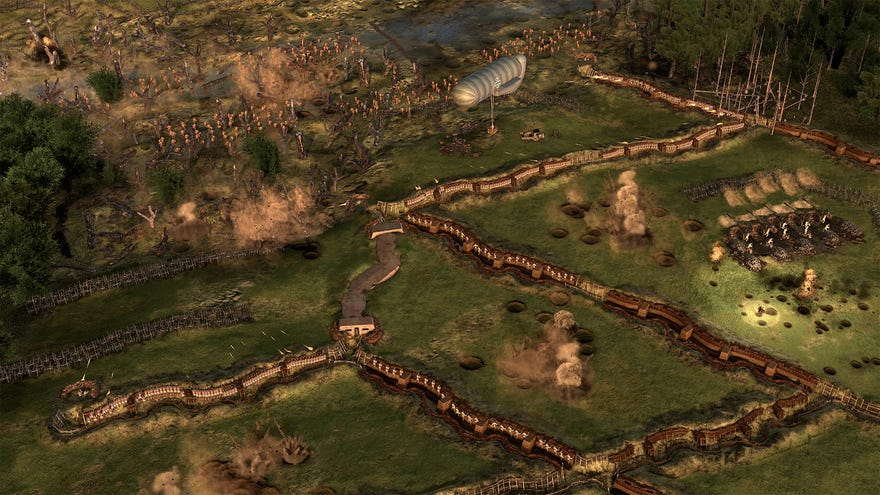The Great War: Western Front gives players a "chance to rewrite history"
A new dev diary dives deeper into how the game modes work
The devs behind Command & Conquer Remaster are releasing their The Great War: Western Front on March 30th, but for now they’re showing off exactly how the WW1 RTS works in a new developer diary. The ‘Commanding The Western Front’ video has several leads devs from Petroglyph walking us through aspects of the campaign, from the macro decisions of Field Commander Mode, to the tactical RTS skirmishes in Theatre Mode.
Katharine’s early impressions from last year revealed how The Great War would remain authentic to the historical battles of World War 1. The game’s lead designer said that “WW1 is known for being a war of attrition and a battle of inches,” and as a result, The Great War’s battles have several different outcomes including Major Defeats, Minor Defeats, Stalemates, and plain old Victory. WW1 was a bleak, desperate war for all involved, and the video highlights how even a minor victory can still make an impact. James's even earlier impressions also left him confident that The Great War would capture WW1’s battles of attrition.
Despite the game’s commitment to realism, the new video shows off some of the surprising ways you can play with history. Senior producer Ted Morris says that “you can play as either the Allied Nations or The Central Powers,” and this choice will give players “a really unique way to play through history or redefine it.” There are also plenty of choices to make that will affect the trajectory of your campaign and lead to some, erm... non-canonical outcomes? Check out the full video for insights on the game’s tech trees, historic headlines events, and nationality bonuses.
The Great War: Western Front will release March 30th on PC via Steam and The Epic Games Store for £30/€35/$35. There’s also a Victory Edition available for £35/€40/$40 and players who pre-order can enter the trenches three days early on March 27th.





